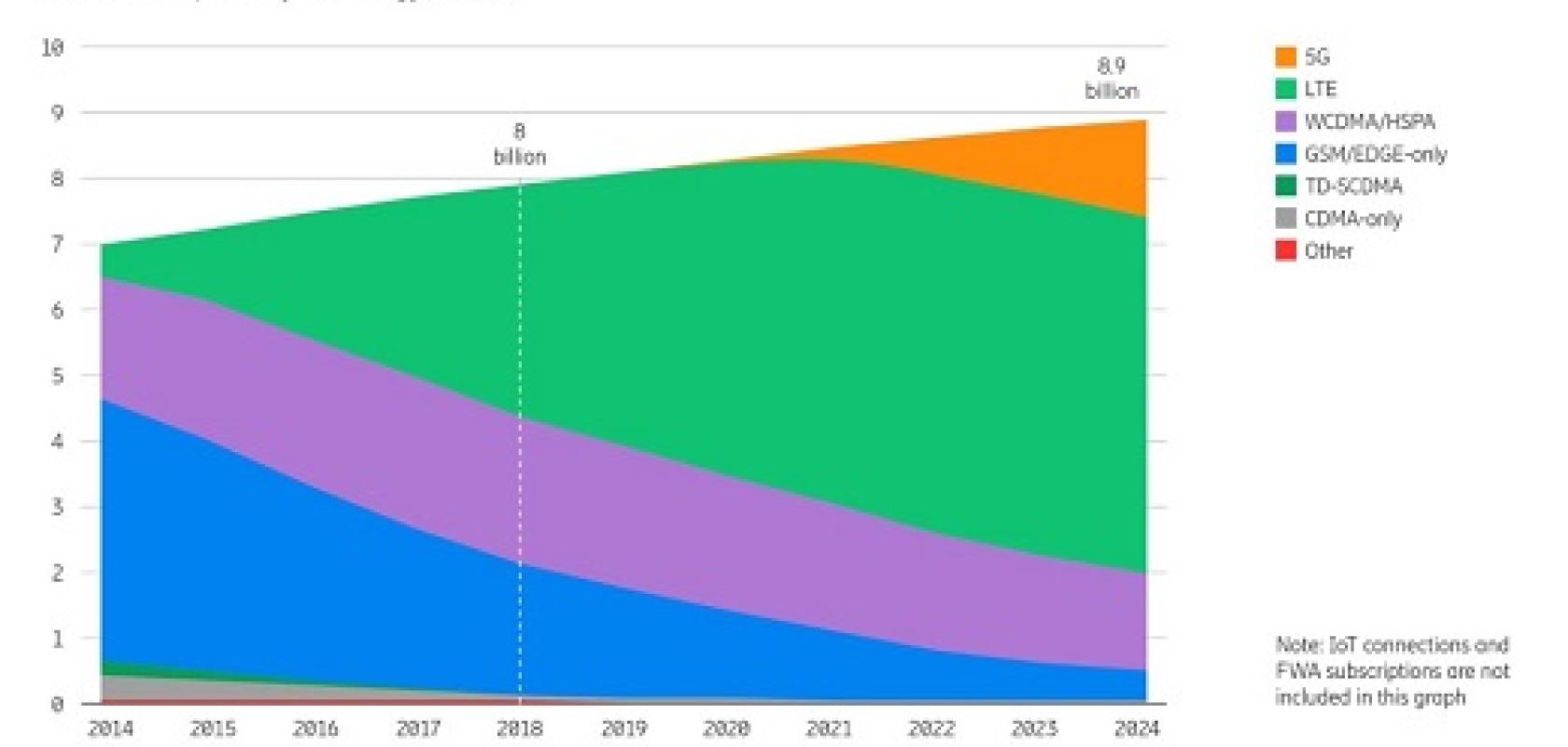Ericsson has released its latest Mobility Report, which predicts, amongst its findings, that 5G could reach more than 40 per cent of global population coverage, with 1.5 billion subscriptions for enhanced mobile broadband by the end of 2024.
The key drivers for this, according to the report, include increased network capacity, lower cost per gigabyte and new use case requirements.
In terms of markets, North America and North East Asia are cited as taking the lead, with subscriptions in North America forecast to account for 55 per cent of mobile subscriptions by the end of 2024, and in North East Asia, 43 per cent. In Western Europe, 5G is forecast to account for some 30 per cent of mobile subscriptions in the region by end of 2024.
The uptake of NB-IoT and Cat-M1 technologies is driving growth in the number of cellular IoT connections worldwide, said Ericsson. Of the 4.1 billion cellular IoT connections forecast for 2024, North East Asia is expected to account for 2.7 billion. Evolving and widespread requirements across a variety of use cases are prompting service providers to deploy both NB-IoT and Cat-M1 in their markets.
The report also stated that mobile data traffic in Q3 2018 grew close to 79 percent year-on-year – the highest rate since 2013. Increased data-traffic-per-smartphone in North East Asia (mainly in China) pushed the global figure notably higher. With a traffic growth per smartphone of around 140 per cent between end 2017 and end 2018, the region has the second highest data traffic per smartphone at 7.3 gigabytes per month. This is comparable to streaming HD video for around 10 hours per month.
Fredrik Jejdling, executive vice president and head of business area networks at Ericsson, commented: ‘As 5G now hits the market, its coverage build-out and uptake in subscriptions are projected to be faster than for previous generations. At the same time, cellular IoT continues to grow strongly. What we are seeing is the start of fundamental changes that will impact not just the consumer market but many industries.’
Earlier this year, Ericsson announced its intention to boost network automation capability by increasing its minority stake in CENX to 100 per cent of the company’s shares (see Ericsson to boost network automation capability with CENX acquisition).


